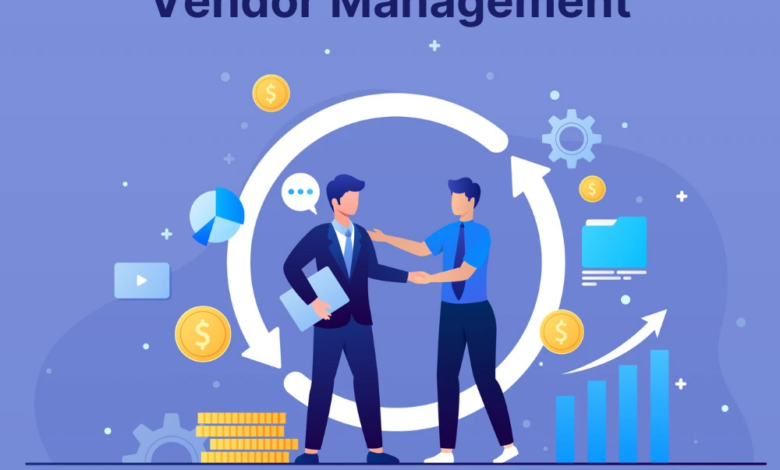Streamlining Success: Navigating Vendor Management for Optimal Results in 2024

In the dynamic landscape of business operations, organizations are increasingly relying on external vendors to meet their diverse needs. Vendor management has emerged as a crucial aspect of business strategy, encompassing the processes and practices employed to oversee the relationships with external suppliers.
This blog delves into what is vendor management, explores the challenges associated with it, and highlights the benefits of implementing a robust vendor management system (VMS).
What is Vendor Management?
Vendor management, in essence, is the disciplined approach to controlling costs, driving service excellence, and mitigating risks by strategicallfy managing third-party vendors. It involves the entire lifecycle of a vendor relationship, from the initial identification and selection to contract negotiation, performance monitoring, and termination if necessary. Effective vendor management is more than just transactional; it’s about fostering collaborative partnerships that contribute to the overall success of the business.
Vendor Management Challenges
While vendor management is essential for optimizing operational efficiency, it comes with its fair share of challenges. Recognizing and addressing these challenges is crucial for ensuring a smooth and fruitful collaboration with external vendors.
Risk Management:
One of the primary challenges in vendor management is mitigating risks associated with outsourcing. This includes financial risks, data security risks, compliance risks, and even reputational risks. Organizations need to establish comprehensive risk management strategies to anticipate and address potential issues proactively.
Communication and Collaboration:
Effective communication is the cornerstone of successful vendor management. However, maintaining open lines of communication and fostering collaboration can be challenging, especially when dealing with vendors located in different geographical locations. Overcoming language barriers and ensuring that expectations are clearly communicated are critical aspects of effective vendor management.
Performance Monitoring:
Monitoring the performance of vendors is essential for ensuring that they meet the agreed-upon standards. This involves setting Key Performance Indicators (KPIs), conducting regular performance reviews, and addressing any deviations from the established benchmarks. The challenge lies in creating a system that provides real-time insights into vendor performance.
Regulatory Compliance:
Regulatory compliance is a significant concern in vendor management, especially in industries with stringent regulations. Ensuring that vendors adhere to the relevant legal and industry standards requires meticulous oversight and often necessitates adjustments to contracts and processes to maintain compliance.
Vendor Selection:
Choosing the right vendors is a critical step in the vendor management process. The challenge here lies in conducting thorough due diligence to identify vendors that align with the organization’s values, goals, and quality standards. Failing to select the right vendors can lead to a host of issues down the line.
Benefits of Vendor Management System (VMS):
Implementing a Vendor Management System (VMS) is a strategic move that can help organizations overcome the challenges associated with vendor management. A VMS is a technology-driven solution that streamlines and automates various aspects of vendor management, providing a centralized platform for managing vendor relationships. Here are some key benefits:
Cost Savings:
A VMS enables organizations to optimize costs by providing visibility into vendor performance and expenditures. By identifying areas for improvement and renegotiating contracts based on performance data, businesses can achieve significant cost savings over time.
Efficiency and Automation:
Automation is a key advantage of implementing a VMS. Routine tasks such as vendor onboarding, invoice processing, and performance monitoring can be automated, freeing up valuable time for strategic decision-making and relationship-building.
Risk Mitigation:
A VMS provides tools for comprehensive risk management, helping organizations identify and mitigate potential risks associated with vendor relationships. This includes monitoring compliance with regulatory requirements, data security protocols, and other risk factors.
Enhanced Communication:
Centralized communication channels within a VMS facilitate better collaboration between organizations and vendors. Real-time updates, document sharing, and messaging functionalities improve communication efficiency and reduce the likelihood of misunderstandings.
Performance Analytics:
VMS platforms offer robust analytics capabilities, allowing organizations to track and analyze vendor performance against predefined KPIs. This data-driven approach provides valuable insights for continuous improvement and strategic decision-making.
Scalability:
As businesses grow, their vendor ecosystems often expand. A VMS is designed to scale with the organization, accommodating an increasing number of vendors and transactions without sacrificing efficiency or data accuracy.
Strategic Vendor Selection:
A VMS assists in the strategic selection of vendors by providing data-driven insights into their performance, reliability, and compliance history. This ensures that organizations make informed decisions when entering into new vendor relationships.
Contract Management:
Managing contracts efficiently is a vital aspect of vendor management. A VMS helps organizations organize and track contract details, milestones, and renewal dates, reducing the risk of overlooked obligations and facilitating smoother contract negotiations.
Conclusion:
In a globalized and competitive business environment, effective vendor management is no longer a luxury but a necessity. Overcoming challenges in vendor management requires a combination of strategic planning, effective communication, and the right technological tools. By implementing a Vendor Management System, organizations can unlock a myriad of benefits, including cost savings, improved efficiency, and enhanced risk management.
Embracing vendor management as a core component of business strategy empowers organizations to build stronger, more collaborative relationships with their external partners, ultimately contributing to sustained success in a rapidly evolving marketplace. As businesses continue to navigate the complexities of vendor relationships, a well-implemented VMS becomes an invaluable ally, providing the tools and insights necessary to turn challenges into opportunities for growth and innovation.



